-
TrendsLatin AmericaConsumerEuropean Affairs
-
SectorOthers
-
CountriesArgentinaChileColombiaGlobalEcuadorSpainPortugalBrussels / European UnionMexicoPanamaDominican RepublicPeru
For a long time, channel surfing was a common practice for everyone. The need to consume scraps of information has crept into all our activities since the beginning of on-demand television, and that impulse has radically changed how we consume the information and entertainment constantly streamed to our long list of devices. Focusing your attention on specific content for a few minutes requires special effort we are not usually willing to make. Thus, the premium on attention has become one of the main challenges today’s organizations face.
In a world swamped with information, in which content evolves and changes in a matter of seconds, storytelling as a communications technique seems to be one of the most plausible methods for engaging consumers. Organizations believe that, beyond the nature of the business—whether or not there is direct contact with the end consumer—telling stories can be key to opening and maintaining a dialogue with audiences that are not accustomed to being involved in large user conversations. According to Bernardo Leon, director of marketing at Backus AB InBev, one of the 30 communication and marketing specialists interviewed for this report, “Storytelling and storydoing are what consumers are demanding of us, just to be able to enter the game—it is not an option.”
The rebirth of storytelling is now, therefore, a requirement to join conversations between stakeholders. It is a tool that can be used to get closer to an audience that grows ever more sophisticated in how it consumes content. These new consumers feed from various sources of information around their specific interests; they are an audience that will only spend time on the content they identify with, or which offers them some type of value.
STORYTELLING
WHY NOW AND WHAT ARE THE CHALLENGES?
Most of the communication and marketing specialists interviewed for this report agree that the core value of storytelling lies in enabling closer stakeholder relationships. Its emotional content makes it possible for audiences to feel empathy for the message, sending a message of transparency by humanizing the organization. However, it also makes it possible to address the other side’s concerns and interests. For Frank Pflaumer, director of communications and corporate affairs at Nestlé Panama:
“Storytelling is about recovering something that has always been successful. Look back at when you were a child and your mother or father would tell you a story or read you a book; I think we are going back to what is essential. Storytelling is all about getting back to the basics.”
Juan Llovet, communications and sustainability director at Gonvarri Steel Industries, shares that for his organization, storytelling “allows you to reach people, to soften and wrap up the message you want to send and amplify the response from those who receive it, as well as create a positive attitude.” Meanwhile, Adriana Rius, brands and communications manager for Latin America at 3M, says:
“Since we are a company that mainly works with industrial products, storytelling is essential to connecting with audiences and going beyond the product; it’s about speaking to our audiences as professionals and as people, not just as customers. In the long run, this improves brand image and loyalty.”
“The core value of storytelling lies in enabling closer stakeholder relationships”
Corporate communications and marketing leaders widely recognize the benefit of storytelling lies in creating a bond about more than just a transaction, one that helps transmit the company’s message and values based on the audience’s mindset rather than the company’s. That has been the case for Ana Virginia Castrellon, senior manager of marketing and communications at Deloitte Panama, who states:
“We are really changing how we handle things. I think it goes beyond just communicating and creating stories to share, as it is more about beginning to consider how the things we do create lasting impacts.”
Despite its widespread use, almost all those interviewed gave clear indication that storytelling also gives rise to big new challenges, the most widely-shared of which are:
- Maintaining the story’s consistency and coherency, keeping it in line with brand image, values and purpose.
- Constantly creating attractive, relevant and credible content.
- Provoking interactions among stakeholders with that content.
Daniel Montes, communications manager at Cine Colombia, notes that, in addition to the challenges mentioned above, there are others related to trying to be entertaining yet informative and demonstrating the impact of stories on business results. Cine Colombia has developed its communications around the concept of healthy entertainment, humanizing it by sharing films with communities that have not historically had access to this medium. This is a clear example of “storydoing.”
If any of those involved question the emergence of storytelling as a technique, things get complicated when delving into how to build a powerful story with the ability to engage stakeholders. On the one hand, the methods and talents that go into a story’s construction are not all that well understood or known. Additionally, many company teams have not fully developed the ability to connect on a more emotional level, which changes the traditional way we handle products. Susana Coerver, global marketing and communications director at Parfois, believes “one of the main challenges lies in rethinking our teams and composing them differently than we have in the past, as we need digital experts, people who understand our audiences and those who have the ability to stir feelings in others.”
Brand memories, created with powerful stories, are limited to those that have conquered conversational territories in an enduring manner.
“The benefit of storytelling lies in creating a bond about more than just a transaction, one that helps transmit the company’s message and values based on the audience’s mindset rather than the company’s”
For a long time, Coca-Cola has centered itself in the conversation surrounding happiness, Nike has conquered the territory of motivation, Red Bull that of breaking all limits and Heineken has worked in many music-related markets. When we asked the communication and marketing specialists interviewed about the top of mind company on storytelling, Coca-Cola was a common response. Claudia Patricia Rios, part of the Latin American communications department at Gas Natural Fenosa, mentions this is because Coca-Cola has been able to successfully connect with consumers emotionally, going deep to transcend the product, even creating a story based on two cultures which have historically been at odds (Pakistan and India).
That is the power of storytelling. Riccardo Navone, marketing director for IKEA in Portugal, also mentions Nike, recalling its story of women’s empowerment in India, where they held a campaign about women taking a step ahead. Navone alludes to how this use of storytelling is motivating, encouraging others to create their own stories with or through the brand.
WHERE DO THE STORIES RESIDE?
Just as with people, companies have stories to tell. A birth, a trip taken, conflicts and the values that make complete sense of it. As they grow and mature, they dive into their reasons for being and refine their purpose. Based on that story, their common perception is gradually shaped.
Brand stories have something to do with each person’s journey. That is why most of those surveyed place the corporate narrative somewhere between the stories they launch in the medium-term and the stories they tell in the short term. For most of them, the primary motivation behind telling a story comes from the company’s current goals. All the executives interviewed find it quite natural to include their corporate narrative in their stories, and none could imagine communicating without aligning to this purpose.
We shall begin with AVON as our example. AVON inserts their narrative into everything they create, ranging from the company’s slogan, “Beauty for a purpose.” “Beauty is the road and empowerment is the destination,” says Susana Casabe, director of communications and CSR at Grupo de Mercados Sur. “We develop products to promote economic independence, while creating a sense empowerment based on healthy self-esteem.”
It is therefore no surprise to discover these initial seeds, parts of the company’s DNA, are what now help make sense of today’s stories. Both Gruppo Campari Argentina and Nestlé Central America have been recreating stories using the same concepts for years now. Mariano Maldonado, director of marketing at Gruppo Campari Argentina, says they include brand stories in all their phases. “They have to do with the industry, not necessarily only with our products, as brands have very strong ties to stories; there is basically no brand we work with that has less than 200 years of history,” said Maldonado. “There is an anthropological tie between alcoholic beverages and human beings going back thousands of years. Based on this, the opportunity to retell a story opens up a number of possibilities, allowing us to seek the aspects that are as relevant today as they were 200 years ago.”
That is when we find something all companies have in common when it comes to explaining the importance of including their corporate narrative in their stories: the need to be honest, transparent and coherent while disseminating their values. Backus AB InBev says it is not about each story having a mission to fulfill, but rather being honest and practicing what they preach:
“If we stray from our dream of providing social lubricant for a better world, none of the activities or stories in our brand narratives—or even our corporate brand—could be seen as honest or be relevant later. We would be getting away from the mission that pushes us forward every single day,” states Bernardo Leon Cantella, the company’s marketing director.
On the other hand, as explained by Carmen Maria Irazola MacDonald, marketing manager at Saga Falabella, “The story cannot adapt to your values, but rather should be based on those values, as it would otherwise be very difficult to create a strong link to the brand and you’d lose credibility.”
Most brands’ goal is, therefore, to communicate their purpose, but the challenge lies in being creative when telling stories about themselves. At AB InBev brand Cerveceria y Malteria Quilmes, they are confident they have managed to incorporate storytelling and their mission into the content they are developing. “The recent responsible consumption campaigns have put a lot of focus on the designated driver in a multimedia and multidevice communications strategy,” shares Lucas Adur, consumer connections director for LAS (Latin America South) at Anheuser-Busch InBev. “Through humorous vignettes, we sought to work on a very important communications pillar for our company’s vision: our dream of becoming the biggest beverage company on Earth, uniting people for a better world. The CSR campaigns we hold play a key role in achieving this dream.”
Along these same lines, Salome Suarez, director of corporate relations at the Spanish company Multiopticas, explains: “After the Nepal earthquake in 2015, we heard a story of a group of mountaineers who were there and stopped doing what they were doing to help people. Their story seemed interesting to us, and we saw an opportunity to offer our own little contribution. All Multiopticas’ aid must be connected to the company’s business: caring for people’s visual health, testing eyesight and offering them the best glasses; that is our Foundation’s criteria. In Nepal, we tested the eyesight of 1,200 people, then donated 300 pairs of eyeglasses and 500 pairs of sunglasses. In addition, we donated medication and had local doctors accompany our eye doctors on this adventure, reaching people who had never before had the opportunity to get a medical checkup.”
THE IMPORTANCE OF STORIES IN AREA AND COMMUNITY ANALYSIS
Using their corporate narratives, companies build their stories in the various areas that help them connect to their communities of interest. They analyze these communities in different ways to gain a greater understanding of how to generate impactful stories and better connect.
“We listen to people to offer relevant content that offers them value, communicating around topics such as wellness, the environment, community, employment, our history or our brands. Every topic has a specific way of being told based on our business goals; promoting and protecting corporate reputation; and the topics we seek to disseminate, position or even demystify,” says Eugenia Cesar from the digital communications department at Coca-Cola Mexico. On a similar note, Rafael Fernandez de Alarcon, global director of sponsorships and institutional relations at Telefonica, says “We always try to make it so Telefonica’s contribution goes beyond just financially supporting a good initiative. We have learned that when we truly get involved, using our talent and technologies, the stories gain in credibility and we come out looking like a friendlier company.”
The long-term corporate narrative takes companies to a series of conversation areas associated with their purpose and business strategy. There are those who believe they achieved a specific story in many territories organically; others, however, confess they have made various efforts to bring their brands closer to areas such as music, fashion, entertainment, sustainability or ecology, and have realized the opportunity does not lie in quantity, but rather in strength and persistence.
Other companies concentrate on only one territory, such as empowerment in the case of AVON, but they apply this to all facets of a woman’s life, from her studies and economic independence to her physical health—to fighting breast cancer—and emotional wellness—by working to stop the scourge of gender violence. The company also works behind the scenes to create conditions that guarantee equity and promote opportunities for women to enter new decision-making arenas. At Enel-Codensa, Alejandro Barragan, assistant manager of innovation and market development, believes the company “has very well-defined values, and the main cornerstone is opening up to new technologies, new clients and new uses for energy to explain a whole set of values, including innovation, which is our main focus. Storytelling personifies these values in a way that is tangible for people, helping them make them their own.” On the other hand, Andre Bettencourt, director of marketing and communications at Bridgestone in Portugal, says that, at his company, “everything is always done on the basis of safety. For us, telling a story implies the use of a vehicle—a motor vehicle, in this case—which connects to something we also want, which is for people to think about getting away, discovering new things and traveling, all as things that can be achieved—safely.” In line with this, Bridgestone Portugal worked to get the public involved in a narrative regarding road safety through the Estrada Fora web series, in which the brand’s followers were challenged to decide the ending for the last two episodes (thus taking advantage of the potential of cocreation and fandom techniques).
Jaime Lobera, chief marketing and sales officer at Campofrio Food Group, sums it up by saying that what they have sought to do is determine:
“which territories our brands are most relevant in and where our company could be credible, leveraging its legitimacy in areas relevant to the business. After that, we analyzed the territories we could enter or that could generate interest among target audiences, then created a matrix relating communities to areas and determined what each one could offer our brand in terms of creating connections in the medium–and long-terms, which is highly relevant to our business.”
This idea resulted in several success stories, such as the one involving its story in the area of empowerment for modern women, reflected in transmedia storytelling campaigns like Deliciously Calm and Message for the future.
Most companies use different tools and analysis methods, providing various measuring methods to identify messages that offer value, have an impact, generate insights and to understand what is happening in terms of the conversation and society, enabling them to better participate. “What inevitably happens is that there must be a fairer exchange between consumers and producers, and I think it is absolutely fantastic to see it happen,” says Maldonado, director of marketing at Campari in Argentina. “I believe the immense transfer of power occurring today is just excellent. It’s great that today’s companies are concerned with having a brand or company purpose, viewing it as another reason for existence, one beyond earning money. They are concerned about having a beneficial impact on society. I even believe it’s a good thing that this is a response to this change in power, whether or not it’s genuine. After all, in most cases, it’s not.”
Increasing consumer power is based on the changes that have occurred thanks to the recent technological breakthroughs, which have forced a change in brand communication priorities, as they now must focus on identifying target audience interests to meet each community’s particular needs. “Consumer profile is no longer so important; Rather it is now about understanding what moves consumers, what causes they care about,” says Carolina Gonzalez, senior communications manager for the Northern Cluster at Johnson & Johnson Medical. “It is about democratizing. We are now united by interests, not socioeconomic factors.”
Regardless of the industry, there is marked interest in using these analyses to identify the best ways to communicate the relevant and meaningful values shared by consumers. “It all starts with the right segmentation to ensure a better understanding of the audience and the strengths and weaknesses in our portfolio,” declared Lucas Adur from AB InBev, explaining the importance of community analysis in identifying the “passion points” that mobilize their consumers.
“This is something we do periodically, either annually or bi-annually in every country in the region. We need to understand what their values are, know these unsatisfied needs, to understand the strength and role of each brand in the portfolio. This is our first step.”
The smart analyses and services used to understand consumers must be adapted to not only each brand’s needs, but also to each market where the brand is present. In the case of AVON, the company works with global market studies and does in-country research, using different measurements to come up with the specific changes they should make. The situation is similar at IKEA, where they also work with consumer profiles in different markets, analyzing them and considering everything from mega-trends to local preferences when building their business plan and communications strategy.
It is indisputable that, regardless of the measurement and analysis strategy applied or the greater (or lesser) degree to which these practices are used, companies are following consumer conversations. They do so by understanding their stakeholders’ needs, even processing the information handled by their sales forces as key data, treating it all as powerful sources of information. Understanding community needs offers value, but getting ahead of the trend is what allows us to create a strong present, building a powerful future for the brand and, above all, creating relevance over time.
TRANSMEDIA STORYTELLING
Storytelling is a technique as old as communications itself, but transmedia storytelling is completely new, as it is derived from the modern digital breakthrough. Being capable of telling stories in different formats and across disparate channels without losing the idea along the way, while also understanding the diverse conversation models we now face, requires an all-new approach.
The Emotional Driving campaign, conducted by Spanish multinational firm Gonvarri, focuses on how positive motivation can help prevent traffic accidents. Emotional Driving has taken the utmost advantage of various formats and channels for more than three years, allowing it to tell stories revolving around the same idea. It has moved from a book to real-life experiences at their own worksites, gamification and web series, all focused on generating employee and stakeholder engagement. Jose Leyton, creative director at Turner Latam, emphasizes the need to think about conversation ecosystems. “In the last year, we have seen how each social network has its own rules, style and language, and if your content does not take these norms into account, it is very likely it will be ignored on each platform.”
“Understanding community needs offers value, but getting ahead of the trend is what allows us to create a strong present, building a powerful future for the brand and, above all, creating relevance over time”
The time for storytelling comes when we want to go further, as creating experiences is key to connecting with communities. Living out the brand’s purpose while entertaining its target audiences not only enables an instant connection, but also helps build strong relationships. Movistar’s Rafa Nadal Challenge allowed Telefonica to create interactive experiences and virtual games for its customers to play at its stores, which then generated conversations on social media. The company shared the best resulting stories in a video, which further increased engagement around the challenge and generated awareness on different channels.
Eugenia Cesar, part of the digital communications department at Coca-Cola Mexico, believes that:
“the stories we tell come from the actions we take. For us, storydoing goes beyond creating experiences with our stakeholders or proposing activities to be able to tell a story later—it’s about turning our philosophy and values into action. We tell stories because we take a large number of actions.”
However, that leap is not as easy to make as it appears; there are barriers from customers, advertisers and communication specialists. “Many creative teams are accustomed to delivering a television script, but today’s world has gone the other way,” says Lucas Adur, consumerconnections director for LAS at AB InBev in Argentina. “We were able to catch up quickly, teaching our teams to think in terms of transmedia.” Lobera, from Campofrio Food Group, points out that his company:
“was putting 100 percent of our investments into a single medium—TV—only 10 years ago, creating just one type of format for a conventional television spot aimed at a specific target audience—housewives. What we learned is that our public, along with their content consumption, of course, is now much more diverse, so it has become very fragmented. Now, any brand has a lot of opportunities when searching for investment efficacy and optimization. Since 2009, all this has led us to fill the gap by listening more and creating and designing content our various communities will find interesting, putting more importance on the people we’re communicating with than on brand messages aimed at short-term product sales. Transmedia allows you to change the story in different ways, making it more relevant to people.”
In the jump from TV spot to transmedia, allusions to available budget are commonplace, but the reality is that it does not necessarily have to be an obstacle, as it is not about generating more, but rather boosting the most powerful content for a particular channel so it meets company goals. At Multiopticas, they emphasize the type of conversations boosted; For example, they recently committed to a web series which shared the global evolution of optical stores since the 1970s’. More than a story about themselves, it is a story that reflects the changes of an entire sector in an effort to generate conversations not only with consumers, but also with suppliers, customers and SMBs.
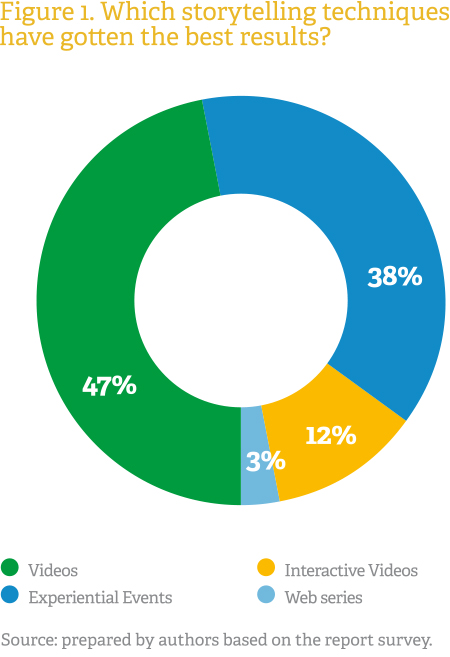
THE MEASUREMENT CHALLENGE
This leads us to the great mystery of KPIs, which still seems unresolved. How have metrics evolved in response to this change in content consumption? Are metrics like ROI, based on potential audiences, still valid when measuring engagement goals, and what can be used in their substitution?
Susana Salazar Gonzalez de Cossio, regional director of experiential and cultural platforms at Bacardi Latin America and the Caribbean, frames the debate as follows:
“All of a sudden, there’s a trend, and you have a whole lot of people at your door telling you they have the best Snapchat strategy for your brand. I think this poses a major challenge, even more so with the huge range of options, tools, resources and platforms available to us. But there is also an immense opportunity if you do not succumb to the schizophrenic thinking that you need everything and must be on every channel to have a proper impact, because you will not have the ability to measure it all. We have not and are not at a point where we can clearly understand exactly what role and effectiveness a specific delivery or specific KPI has in being useful on each one of these platforms. We ourselves measure largely in terms of engagement. Reach, frequency and return on investment; trying to homogenize the formulas used; attempting to understand whether a dollar will have the greatest impact in one medium or another—all these continue to be important indicators. However, the issue of KPIs for scoring the effectiveness of storytelling is an enormous challenge, and I think this is true for many, if not all of us. It is Pandora’s box. So, whoever finds the solution should patent it, because they’ll surely make themselves rich if they do.”
Rafael Fernandez de Alarcon at Telefonica points out that these indicators:
“Are not so different, because storytelling is essentially a strategy that helps position a company’s values through stories, but the goal is the same: brand visibility, building engagement… There are metrics out there that measure ties with a brand, how many people share a post, audience perceptions… but the metrics that really work are those tied to meeting business goals, not those related to the story. Storytelling is just another way to support the company.”
At Coca-Cola Mexico, the emphasis is on the difficulty of measuring what we are interested in measuring—changes in perception.
“Some say everything can be measured in the digital world and across reality, but even though you can get an infinite amount of data, the metrics we are most interested in are also the most difficult to get, and we still have not found something that works 100 percent. Therefore, to measure the efficacy of a story, we consider data points such as views, average visit times and shares. In social media, we measure likes, retweets, etc. But, if we really want to know if a certain piece of content worked or not, we have to use surveys, but even still, we do not get all the qualitative information we’d like to have.”
Ana Serafim, communications manager at Vila Gale Hoteis, also alludes to “the feeling inspired in message recipients and the relationship they then have with the brand, in our case, is measured in bookings and loyalty, which is the ultimate objective.”
Quilmes points out that:
“The bad thing about traditional communications is that we have very little information on the performance of what we do. If I direct a message to a traditional media audience, it will probably stick with many of the people I am interested in targeting, but I am also going to reach many people not part of either my ‘core group’ or the audience I want to influence. Therefore, the information on who it sticks with is superfluous. The level of attention is poor or almost zero. If I place a billboard on the Pan-American Highway, how much information can I obtain on who we reach? How do I calculate frequency? Do the same people see my billboard every day? The truth is, the digital environment has been able to provide better background on information and measurable KPIs. While there is a lot of information that cannot be trusted due to bots, fake views, etc., there is also a great global debate on the best ways to face and resolve these problems in the short term.”
LOOKING FOR STORYTELLERS
All that said, just who is the storyteller responsible for humanizing corporate messages sent out to the market? What skills must such a person have to drown out the competition in a transmedia scenario?
As a rule, teams in charge of corporate marketing offices are experts trained in communications. They are people who, in the words of most of the large companies interviewed, must have a very specific set of skills. As defined by Isabel Borgas, director of communications at NOS, the emergence of storytelling “is going to force communications and marketing professionals to be much more versatile, flexible and open-minded, because it forces them to rethink their role.”
The first and most highly-demanded skill the companies surveyed for this report mentioned is being able to encode stories. However, it is important to remember that our storyteller will not tell us just any old story—theirs must be prepared in a manner that connects with consumers, is easy to transmit and difficult to forget. There is a link between that and creativity. To this end, Juan Llovet from Gonvarri Steel Industries says, “You need a high degree of creativity to imagine, constantly stimulate your team and come up with new ideas.” A storyteller’s creativity must be further reflected in their ability to identify the right “raw material,” picking out the big idea on which to build a story centered on a real need among the audience to which they are speaking. In order to achieve this, Gabriel Chavez, marketing manager at Coca-Cola Peru, believes marketing and communication professionals must know who they are targeting and must “be with them, breathe with them, seeing how they move and what they do, understanding their problems and their day-to-day lives.”
All this means our hero must know consumers qualitatively and quantitatively, enabling them to strategically understand the audience and anticipate their behaviors, understand expectations in addition to—and with the goal of—knowing how to connect with them. Obviously, all these skills intertwined are, given their importance, highly desirable to all the companies consulted. Alvaro Rojas, director of business at Pastificio Santa Amalia, Grupo Alicorp Brazil and former director of marketing at Alicorp Peru, says that, beyond the cliché, storytellers have to know consumers “because what often happens is that you tell the story you want to tell, not the story they want to hear.”
Up to this point, this describes a creative professional with highly-developed skills for understanding and connecting with target audiences; in other words, someone who has developed extreme soft skills, someone with the ability to deeply listen and who has the empathy and sensitivity to understand their communities of interest. Note that we say “communities,” plural, to make it clear that this professional must know how to recognize and work with different groups based on specific interests.
In addition to all of this, they must be curious and open-minded; most of the executives interviewed mentioned this as well. David de Castro, corporate strategic communications advisor at Grupo Corporativo Perez, is of the opinion that “it is essential for the storyteller to have read the great writers, the classic stories and novels; those who do not read do not know how to tell stories.” It is worth noting that both curiosity and open-mindedness are related to the endless process of learning, which, though outside a storyteller’s purview, can nonetheless help them in their efforts. Versatility, adaptability and agility also must appear in a marketing manager’s or communicator’s professional profile, if they are to tell stories with a product at the core of the message.
David Hernandez, general manager of Popeyes in Panama, highlights that these professionals must have “the ability to innovate, to change at the same pace as modern society, to be flexible and dynamic and adjust to market trends without losing sight of strategic thinking; in other words, of where the brand is going.” In addition, this person must have a good dose of courage to suggest storytelling to an internal public, which tends to be conservative. This daring nature comes hand in hand with taking the calculated risks that enable a bubbling creativity and curiosity. But of course, none of this is possible if the recipe does not include a bit of tolerance for error and resilience.
“Curiosity and open-mindedness are related to the endless process of learning, which, though outside a storyteller’s purview, can nonetheless help them in their efforts”
With the soft skills covered, it is time to discuss the essential technical skills that will make our storyteller shine in a dynamic and hyperconnected world. Most of those interviewed agree that storytellers must obviously be up-to-date with the digital world and its corresponding tools and formats, and they must, above all, know how today’s omnipresent social networks function. But when talking about the digital world, we must also mention proficiency in the metrics used as another skill companies require. This aligns with the ability to choose which traceability variables will best measure the chosen strategy’s efficacy. As a result, a storyteller must have a significant capacity for abstraction, as well as data and informational analysis.
Analytical capabilities can also help professionals use storytelling techniques, as they must create transmedia content in an atmosphere where digital channels are becoming increasingly important. If we go back to creativity, we see the next thing to take into account is an ability to find and develop a story, then transform it into attractive transmedia or multichannel content. Ricardo Rosa, global strategic marketing director at Sonae Sierra, underscores that tremendous creativity is necessary to adapt a story “to different channels, which will only become more important as the media world is getting smaller all the time.”
As if this were not complicated enough, Argentine company Quilmes stressed how important it is for the storyteller to be aware of the constant competition with different brands present on the channel, regardless of their company’s sector.
“Past recipes do not work for a young person constantly consuming content, because on social media, you are always looking at content,” begins Lucas Adur. “I don’t believe Quilmes is competing with other beer brands. In fact, Quilmes is not competing with other brands of alcoholic beverages; Quilmes is competing with every other brand present in the stream of information on a young person’s phone.”
But what happens if a storyteller cannot check off the entire list we have mentioned? Keep calm, because even though it is desirable for them to have everything described, the companies interviewed also shared that it is not important only to be multifaceted, but also to take advantage of diversity. It is important to get the best out of multidisciplinary teams that, taken together, offer the skills described, as well as to get support from agencies to boost or augment your own skills. Likewise—and ultimately—if superlative soft and technical skills are not common currency, Daniel Montes, marketing manager at Cine Colombia, reminds us that “if you do not have the skills, it is still fundamental to understand them and know that technique exists.”
Why is this knowledge the Colombian company mentions so important? Because storytelling is one of the tools offering companies’ corporate communication efforts the most value. It makes one think it will be even more so in the future; after all, 90 percent of the firms consulted said they were expecting to include storytelling in their marketing strategies in the coming year.
THE FUTURE OF STORIES
Nevertheless, in a context of changing content consumption and the evolution of conversations constantly in flux, where are we going in terms of storytelling? “Often, companies do not have the speed or the flexibility to be quick enough to play this game, so when we identify those who are playing it very well, the best thing to do is to invite them over so we can do things together,” says Lucas Adur of Anheuser-Busch InBev.
IKEA is one of the brands with the greatest experience in this field. They truly understood how its role is to promote a story, not lead content production. “We have the example of the blue bag, our frakta,” point out Riccardo Navone and Helena Gouveia dos Santos from Ikea. “There is so much buzz out there from people sharing how they use this product. That came about organically, and then we promoted it.”
“90 percent of the firms consulted said they were expecting to include storytelling in their marketing strategies in the coming year”
Although they acknowledge the cocreation’s potential to generate brand credibility, most of the professionals also noted that promoting user participation in brand conversations is no easy task. “People are interested in their friends’ and families’ stories, and it is difficult for us brands to inject ourselves into those,” shares Rafael Fernandez de Alarcon from Telefonica. “You have to have done something really well for them to advertise you for free.”
Technology is changing the way we talk about stories, opening up a range of possibilities regarding channels, communication techniques and consumer knowledge. “The stories, however, continue to be the same, since they have a creator,” says David de Castro, storymaker and corporate identity and brand strategist for Grupo Corporativo Perez. A full 64 percent of the professionals consulted in this study believe Big Data will be the factor that most affects how we tell stories in the years to come. “You can promote your stories, but if you do not know or understand your specific target and their behaviors, etc., you will not get the expected return,” says Maria Cecilia Morales, digital media manager at Bayer Central America and the Caribbean.
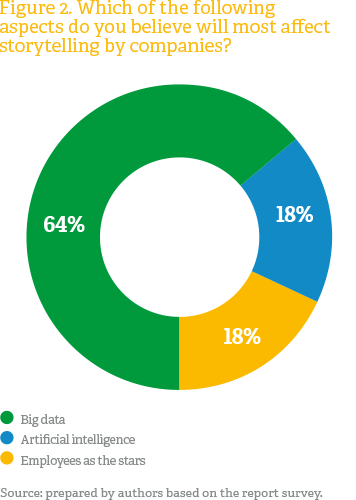
Even so, most of those interviewed stated they did not know what the impact would be, though some have already mentioned the potential to gain insight into consumers.
“Big Data will be critical to the way communities, targets, channels and formats are determined, but I’m still not able to predict what the impact will be,” says Ricardo Rosa from Sonae Sierra.
“The challenge lies in analyzing all this data and processing it adequately,” they say at Nestlé Central America.
Raw data gathered through technology is not enough to design good marketing and communication strategies. To make good decisions, we need Data Analysis; in other words, Smart Data. Moreover, the human work of analyzing and making decisions is essential to innovation.
“It is important to know what consumers are saying, but it is also important to have the courage to take risks even if the data does not recommend a path you feel passionate about,” notes Susana Coerver from Parfois.
Big Data makes it easier to detect communities composed of individuals with shared values or interests, and it can even identify the interests of unique individuals. Thus, brands can create content and personalized experiences for their users. This trend is key in an environment where brands must compete for attention from consumers who have been infoxicated (intoxicated with information), and who have the never-before-seen power to choose what information to consume. For example, Netflix offers its users content that has been selected especially for them based on an algorithm that takes into account both previously watched content and content other users with similar interests have watched.
Among this personalized content and the interests of specific communities are micro-stories, which can spread via social media. Live videos are in, especially among the youngest generation, and they will be even trendier in the future, meaning companies must adapt to them. Consumers are already talking about their experiences with brands in live videos broadcast via Facebook Live or Instagram. In this context, the brand’s role is to encourage positive content in which consumers share the brand’s values or product benefits, thereby becoming brand ambassadors (advocates). Adriana Rius, brand and communications manager Latin America for 3M, says:
“For consumer brands like Nexcare®, we have invited mothers in our community to offer first-aid advice and tips during specific seasons, such as back-to-school, or had Scotch-brite® consumers tell us their stories behind a clean area. The participation we’ve seen has been really great.”
Asked about which storytelling format they believe will evolve the most over the next few years, 52 percent of those interviewed for this report stated that brand content cocreation with users will be the most outstanding trend, followed by immersive content (29 percent) and live narratives. Immersive content refers to the use of technologies such as virtual reality, augmented reality, 360, etc., which are also trends marketing professionals leverage to tell stories.
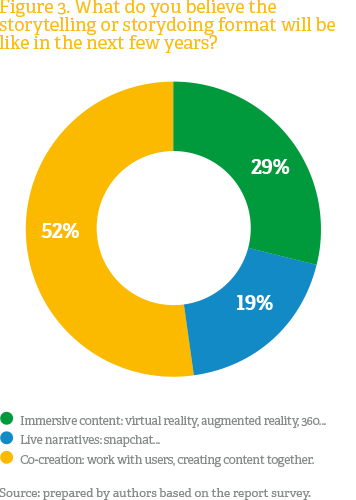
Consumption of live content through Snapchat or Instagram Stories has led to a desire for instant microcontent. Very much concerned with the longevity of their messages, brands know that in this era of all things ephemeral, they must combine intensity of experience with a halo of exclusivity if they wish to capture consumers’ attention.
Collaborating brands:
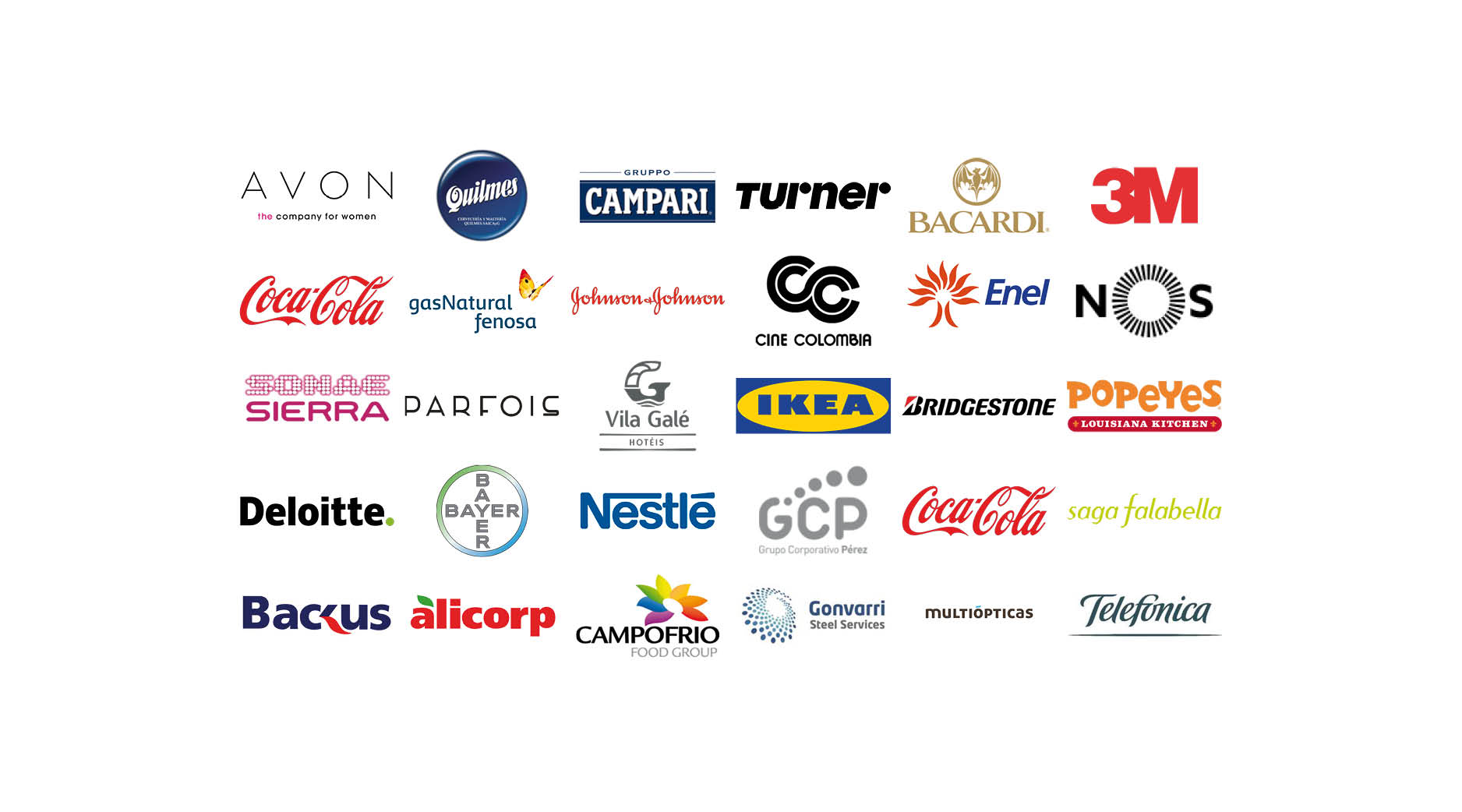
AUTHORS

David Gonzalez Natal
Team Leader of the Consumer Engagement Area at LLORENTE & CUENCA
He holds a Degree in Journalism from Complutense University of Madrid and also studied on Global Chief Communication Officer Program at ESADE. He has worked for El Mundo and Cadena Ser and in the press department of the Círculo de Bellas Artes de Madrid. As Chief Coordinator at the agency Actúa Communicación, David managed national communication campaigns for brands such as Heineken, Red Bull, Movistar and Ron Barceló. He has also managed iconic projects for Campofrío, Coca-Cola, Telefónica, Gonvarri, Bezoya and Sacyr. He teaches Storytelling on the Master in Institutional Communication & Policy program at the Carlos III University and Brand Journalism and Branded Entertainment on the Master in Digital Communication at the University of Cantabria.
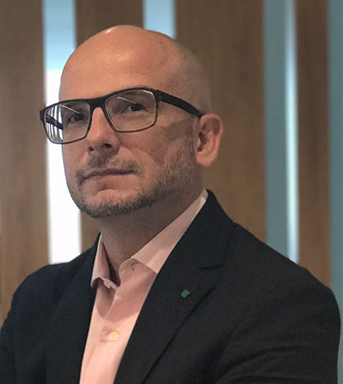
Raimundo Díaz
Senior Director of the Consumer Engagement Area at LLORENTE & CUENCA Panama
He has over 15 years’ experience in corporate communication, journalism and innovation management in Spain, Latin America and the United States. He has advised organizations like the Spanish Ministry of the Environment, Christian Aid, Fujitsu España, Deloitte and GlaxoSmithKline. Raimundo is also the founder and technical director of the University of Cantabria’s Online Master in Digital Communication. He holds a PhD in Business Administration from the University of Cantabria and has also pursued postgraduate studies in Marketing at ESIC Business School and in Business Administration at UC Berkeley. He has also taught and spoke at conferences at several universities in Spain and Latin America. He speaks fluent Spanish, English and Portuguese.

María Carolina Cortés Arce
Senior Director of the Consumer Engagement Area at LLORENTE & CUENCA Colombia
She holds a Master in Development Studies from the Universidad de los Andes and is a specialist in Public Policy at the same University. She also holds a Minor in Business Communication from Copenhagen Business School in Denmark and a Bachelor’s Degree in Finance, Government and International Relations from the Universidad Externado de Colombia. She has worked in the field of communication for over 10 years, collaborating in building and strengthening the reputations of private and public organizations. Her career has seen her work with organizations like Boehringer Ingelheim, ING Bank and Cargill and she has led communication campaigns for brands like BMW, Diageo and Natura. María also teaches on the Postgraduate in Political Marketing at the Universidad Externado de Colombia.

Beatriz Urdaneta
Senior Director of the Consumer Engagement Area at LLORENTE & CUENCA Mexico
She has over 15 years’ experience working in the Client Services Department with Coca-Cola, Empresas Polar, Ford and Daimler Chrysler among others. She has generated communication strategies and implemented them through different channels, leading communication projects with a local and global focus for Bacardi, Sab Miller and Laboratorios Abbott in Mexico, England and throughout Latin America.
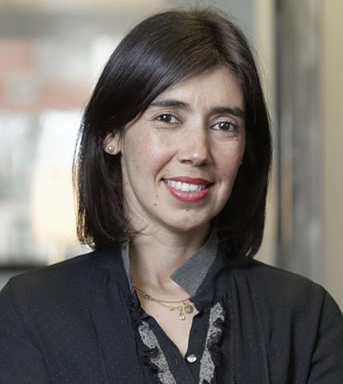
Marlene Gaspar
Director of the Consumer Engagement Area at LLORENTE & CUENCA Portugal
She has worked in several different business sectors including banking, distribution, the auto industry, retail, telecommunications, transport and services. She has over 15 years’ professional experience managing communication for brands within multinational advertising firms like Grey, Leo Burnett, Lintas and Young & Rubicam. She also set up a project to create local content: Lisbon South Bay, a blog dedicated to life on the south bank of the Tagus River. Marlene holds a degree in Public Relations and Advertising from the Instituto Superior Novas Profissões and a Postgraduate in Marking and International Business from INDEG-ISCTE.

Carlos Llanos
Senior Director of the Consumer Engagement Area at LLORENTE & CUENCA Peru
He holds a Master in Marketing and Commercial Management from the Universidad del Pacífico and a Degree in Information Sciences specializing in Journalism from the University of Piura. He has over 17 years’ experience as a consultant, during which time he has designed and developed communication strategies in the areas of finance, technology, mining, energy and hydrocarbons, mass consumption, professional services, tourism, construction and infrastructure, health and beauty, telecoms, entertainment and more. During his time with LLORENTE & CUENCA Peru, Carlos has managed Consumer Engagement initiatives and projects for clients like Backus AB InBev, BELCORP, Ésika, Huawei, McDonald’s and Saga Falabella among others.
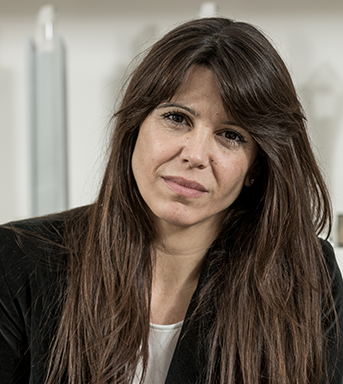
María Emilia Marta
Senior Director of the Consumer Engagement Area at LLORENTE & CUENCA Argentina
She holds a degree in Social Communication and Journalism and a Master in Audiovisual Communication from the Catholic University of Argentina (UCA). Before joining LLORENTE & CUENCA, María developed a career in consulting as a manager at Edelman Argentina and as a team leader at Personally, where she worked with clients from diverse industries (technology, entertainment and mass consumption among others). Prior to her career in consulting, she gained experience in the media, both in graphic media and in radio and TV but primarily in producing content for TV shows related to entertainment, culture, the arts and current affairs.



